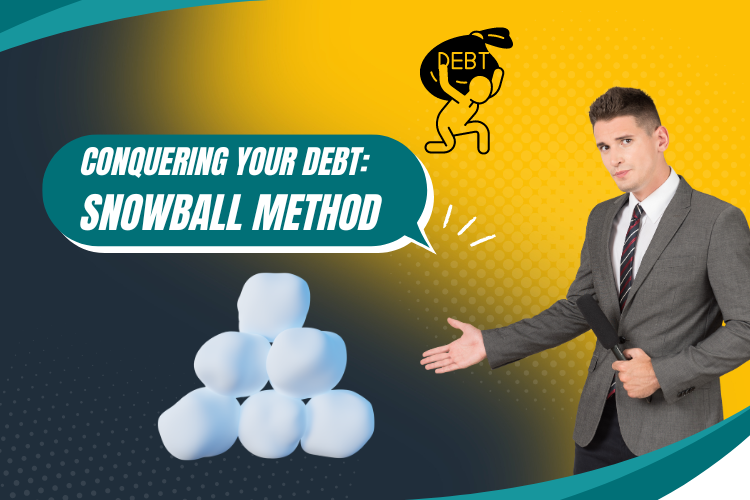
Conquering Your Debt: The Snowball Method Explained
Debt can feel like a heavy burden, but you can get rid of it and get your financial freedom back with the right plan. The Snowball Method is a simple and psychologically rewarding way to solve your debt problems that works.
This article will explain the Snowball Method, its benefits, and how to implement it to achieve your financial goals.
Understanding the Snowball Method

The Snowball Method is a debt reduction strategy that pays off debts from minor to major, regardless of interest rates. The process involves making minimum payments on all debts except for the smallest one, which you pay more towards with any extra money you can afford.
Once the smallest debt is paid off, you move on to the next smallest, ‘snowballing’ the payments towards each subsequent debt.
Step-by-Step Guide to the Snowball Method

1. List Your Debts:
Start by listing all your debts, from the smallest balance to the largest. This should include everything from personal loans to credit card debt, but not your mortgage.
2. Make Minimum Payments:
Ensure you make the minimum payments on all your debts. This step is crucial to avoid penalties and additional interest charges.
3. Focus on the Smallest Debt:

Direct any extra funds to the smallest debt. The goal is to pay off this debt as quickly as possible.
4. Roll Over Payments:
Once the smallest debt is paid off, take the amount you were paying on that debt and apply it to the next smallest debt, in addition to its minimum payment.
5. Repeat the process:
Roll over payments to the next smallest debt until all debts are paid off.
Benefits of the Snowball Method

- Motivation: Paying off your smallest debts first can give you a quick win that will motivate you to keep lowering your debt.
- Simplicity: The method is easy to understand and implement, making it an accessible strategy for many people.
- Behavioral Change: The Snowball Method can help you develop good money habits by making you stick to a budget and make payments on time.
Implementing the Snowball Method

To effectively implement the Snowball Method, you must be disciplined with your budget. Find ways to spend less so you have more money to pay off your debt.
Making a detailed budget could make it easier to keep track of your spending and savings. Additionally, it’s essential to avoid taking on new debt while you’re using the Snowball Method.
Focus on using cash or a debit card for purchases to prevent your debt from growing.
Conclusion
The Snowball Method is a proven debt repayment strategy that can help you take control of your finances. You can pay off bigger debts later if you focus on paying off smaller debts first.
With commitment and discipline, the Snowball Method can lead you to a debt-free life and provide the financial freedom you desire.
To use this method, you must have a good idea of your debts, a strict budget, and the resolve to follow through with your repayment plan. If you’re ready to conquer your debt, the Snowball Method could be the key to unlocking your financial success.





